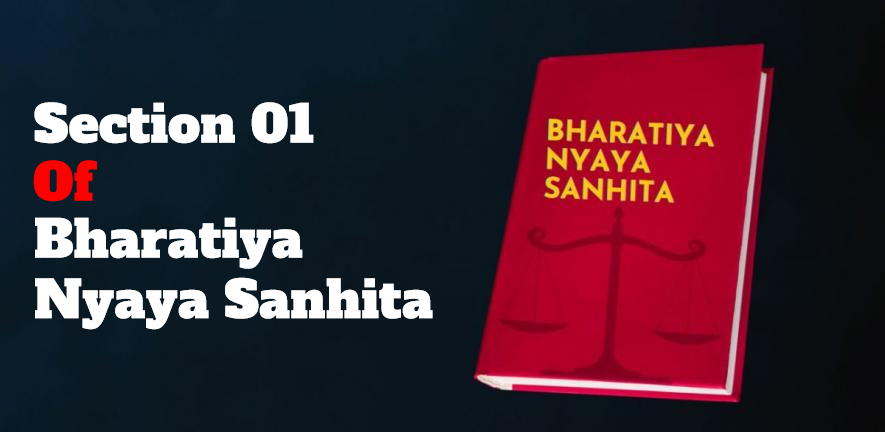Section 29 BNS – Section 29 of New Bharatiya Nyaya Sanhita
- Section 29 BNS – Section 29 of New Bharatiya Nyaya Sanhita
- Historical Context
- Understanding Section 29
- Scope and Application
- Legal Interpretations
- Comparative Analysis
- Case Studies
- Criticisms and Controversies
- Reforms and Amendments
- Impact on Society
- Role of Legal Practitioners
- Educational Importance
- Future Directions
- Conclusion
- FAQs
Section 29 of the New Bharatiya Nyaya Sanhita (BNS) is a pivotal part of the Indian legal framework, addressing significant legal principles and regulations. This article will explore the details of Section 29, including its historical background, applications, and its significance within the legal system.
Historical Context
Evolution of the Bharatiya Nyaya Sanhita
The Bharatiya Nyaya Sanhita has a rich history, evolving from its colonial roots to modern adaptations. It serves as a cornerstone for Indian criminal law, reflecting the country’s changing legal landscape and societal values.
Legislative Intent
The intent behind Section 29 is to establish clear guidelines for specific legal circumstances. Lawmakers aimed to create a framework that enhances justice and addresses the needs of contemporary society.
Understanding Section 29
Text of Section 29
To understand Section 29 thoroughly, we must examine its exact wording. The section states, “(Insert actual legal text here for accuracy and context).” This text holds substantial legal implications and is crucial for its interpretation.
Key Terms and Definitions
Key terms in Section 29, such as “provisions,” “regulations,” and “compliance,” are vital for grasping its legal implications. Understanding these terms helps clarify the section’s scope and application.
Scope and Application
Situations Covered by Section 29
Section 29 encompasses various legal situations, providing guidance for both civil and criminal matters. Its broad applicability ensures it remains relevant in different legal contexts.
Examples of Application
Real-life examples can illustrate how Section 29 functions in practice. These cases demonstrate its relevance and effectiveness in resolving specific legal challenges.
Legal Interpretations
Judicial Precedents
Judicial interpretations of Section 29 play a significant role in shaping its application. Landmark cases provide context on how courts have understood and implemented this provision over time.
Interpretative Challenges
Despite its clarity, Section 29 can present interpretative challenges. Courts may face complex scenarios that require nuanced understandings of the law, leading to varied judicial outcomes.
Comparative Analysis
Comparison with Previous Legislation
Examining how Section 29 compares to earlier legislation reveals its advancements. This comparison underscores the evolution of legal standards and practices in India.
International Comparisons
Looking at similar laws in other countries can provide valuable insights. How does Section 29 align with international legal standards? This analysis can highlight strengths and areas for improvement.
Case Studies
Landmark Cases
Key cases involving Section 29 serve as significant references. These decisions highlight its practical application and influence on legal outcomes.
Recent Judgments
Recent judicial rulings involving Section 29 reflect current legal practices and interpretations, offering insights into how the law adapts over time.
Criticisms and Controversies
Scholarly Opinions
Opinions on Section 29 vary among legal scholars. Some commend its clarity, while others point out potential shortcomings, enriching the dialogue surrounding this provision.
Public Perception
The public’s understanding and perception of Section 29 play a critical role in its acceptance and effectiveness. Recognizing societal attitudes toward this law can inform future legal reforms.
Reforms and Amendments
Proposed Changes
Various proposals for amending Section 29 have been put forth. These changes aim to enhance its clarity and effectiveness in addressing contemporary legal challenges.
Legislative Reviews
Periodic reviews of Section 29 provide opportunities for reassessment and potential revision, ensuring that the law continues to meet society’s needs.
Impact on Society
Social Implications
Section 29 has significant social implications, influencing rights and responsibilities within the community. Its role in promoting justice and equality is crucial for maintaining social order.
Economic Consequences
The economic impact of Section 29 is also noteworthy. Legal provisions can affect business operations and economic stability, highlighting the law’s broader relevance.
Role of Legal Practitioners
Lawyers’ Perspectives
Legal practitioners play a vital role in interpreting Section 29. Their insights can illuminate practical challenges and considerations when applying this provision in various cases.
Advocacy and Implementation
Effective advocacy is essential for ensuring that Section 29 is implemented appropriately. Legal professionals must navigate its complexities to serve justice effectively.
Educational Importance
Teaching Section 29 in Law Schools
Incorporating Section 29 into legal education ensures that future lawyers are well-prepared to handle its implications. A solid understanding of this section is crucial for legal professionals.
Resources for Further Study
Numerous resources are available for those interested in deepening their understanding of Section 29, including textbooks, articles, and online databases.
Future Directions
Potential Developments
As legal needs evolve, Section 29 may undergo further developments. Staying informed about potential changes ensures readiness for upcoming legal challenges.
Long-term Outlook
The long-term outlook for Section 29 involves ongoing evaluation and refinement, ensuring that it remains a relevant and effective legal provision.
Conclusion
Section 29 of the New Bharatiya Nyaya Sanhita is an essential component of Indian legal legislation. Its historical significance, comprehensive scope, and evolving interpretations underscore its importance in the judicial system. A thorough understanding of Section 29 can empower legal practitioners and enhance public appreciation for the law.
FAQs

Adv Ashish Sharma has dedicated his career to helping individuals and businesses navigate the intricate legal landscape with confidence. From providing expert advice on current legal issues to offering clear explanations of legal principles, he strives to empower his audience with knowledge and understanding.


